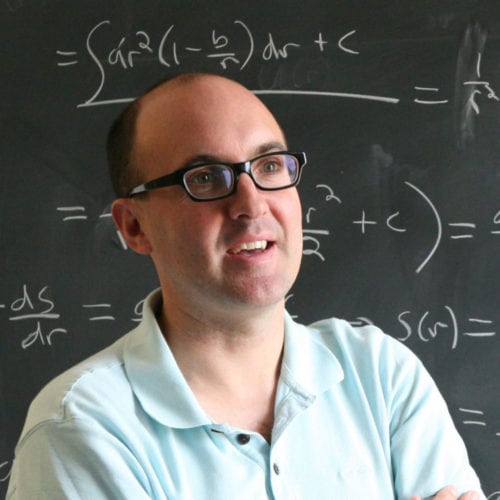Education
Ph.D. – Univeristy of New Mexico
M. S. – University of New Mexico
B.S. – University of Wisconsin-Madison
Research Interests
RESEARCH INTERESTS
- Ecosystem Ecology
- Community Ecology
- Population Ecology
- Theoretical and Statistical Ecology
RESEARCH PROJECTS
- The effects of warming on soil organic matter decomposition
- Metabolic scaling in river networks
- Links between community structure and ecosystem dynamics
- Spatial and temporal variability in populations
- Causes and consequences of elemental stoichiometry in ecosystems
- Microbially mediated DOC transformations
Selected Publications
Min, K, C. A. Lehmeier, F. Ballantyne and S. A. Billings. 2016. Carbon availability modifies temperature responses of heterotrophic microbial respiration, substrate uptake affinity, and uptake 13C discrimination. Frontiers in Microbiology 7:2083.
Song, C., W. K. Dodds, J. Ruegg, M. Trentman, and F. Ballantyne. 2016. Methods of approximation influence stream metabolism estimates. Limnology and Oceanography Methods 14:557-569.
Mellard, J., and F. Ballantyne. 2014. Conflict between dynamical and evolutionary stability in simple ecosystems. Theoretical Ecology 7:273-288.
Song, C., F. Ballantyne, and V. H. Smith. 2014. Enhanced dissolved organic carbon production in aquatic ecosystems in response to elevated atmospheric CO2. Biogeochemistry 118:49-60.
Ballantyne, F. 2013. Evaluating model fit to determine if logarithmic transformations are necessary in allometry: a comment on the exchange between Packard (2009) and Kerkhoff & Enquist (2009). The Journal of Theoretical Biology 313:418-421.
Billings, S. A. and F. Ballantyne. 2013. How interactions between microbial resource demands, soil organic matter stoichiometry and substrate reactivity determine the direction and magnitude of soil respiratory responses to warming. Global Change Biology 19:90-102.
Alexander, H. M., B. L. Foster, F. Ballantyne, C. D. Collins, J. Antonovics and R. D. Holt. 2012. Metapopulations and metacommunities: combining spatial and temporal perspectives in plant ecology. Journal of Ecology 100:88-103.
Ballantyne, F., O. M. E. Schofield and S. A. Levin. 2011. The emergence of regularity and variability in marine ecosystems: the combined role of physics, chemistry and biology. Scientia Marina 75(4):719-731.
Menge, D. N. L., F. Ballantyne and J. S. Weitz. 2011. Dynamics of nutrient uptake strategies: lessons from the tortoise and the hare. Theoretical Ecology 4(2):163-177.
Ballantyne, F. and D. Menge and J. S. Weitz. 2010. A discrepancy between predictions of saturating nutrient uptake models and nitrogen to phosphorus stoichiometry in the surface ocean. Limnology and Oceanography 55(3):997-1008.
Ballantyne, F., D. Menge, A. Ostling and P. Hosseini. 2008. Nutrient recycling affects autotroph and ecosystem stoichiometry. The American Naturalist 171(4):511-523.
Ballantyne, F. and A. J. Kerkhoff. 2007. The observed range for temporal mean-variance scaling exponents can be explained by reproductive correlation. Oikos 116:174-180.
Ballantyne, F. 2005. The upper limit for the exponent of Taylor’s power law is a consequence of deterministic population growth. Evolutionary Ecology Research 7(8):1213-1220.
Gerber, L., S. Heppell, F. Ballantyne and E. Sala. 2005. The Use of Life History Information in Managing Marine Protected Areas in the Gulf of California. The Canadian Journal of Fisheries and Aquatic Sciences 62(4):863-871.
Ballantyne, F. 2004. The relative importance of herbivory and carnivory on the distribution of energy in a stochastic tri-trophic food web. Journal of Theoretical Biology 226(3):349-357.
Kerkhoff, A. J. and F. Ballantyne. 2003. The scaling of reproductive variability in trees. Ecology Letters 6(9):850-856.

